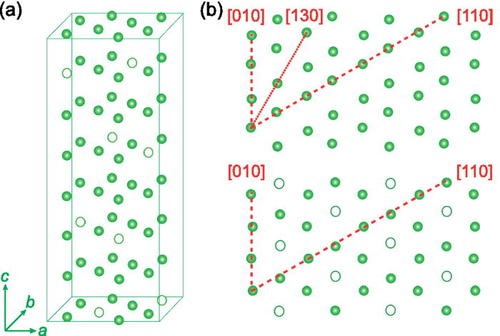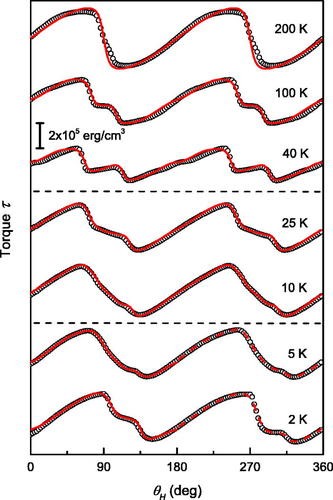Magnetic thermodynamics of pyrrhotite
Monoclinic pyrrhotite known as 4C pyrrhotite (ideal formula Fe7S8) is an abundant monosulfide in the Earth’s crust and extraterrestrial material. Because of its relatively strong ferrimagnetism it is an important remanence carrier to record paleomagnetic information. 4C in rocks can be easily detected by its low-temperature anomaly at about 35 K. The physics behind the anomaly in this classic omission structure (Fig.1a) is unresolved and part of our current research (PhD project of D. Koulialias). In a combined magnetic and structural approach that includes a broad range of rock-magnetic methods and neutron diffraction measurements, we showed that the Besnus transition is a magnetic anomaly that can be explained by an interacting magnetic anisotropy system benerated by the vacancy order in the omission structure (Figs. 1 and 2). Neutron diffraction measurements confirmed the magnetic origin and the absence of a crystallographic change associated with the Besnus transition. The understanding of the Besnus transition is beneficial for the use of pyrrhotite in the Earth sciences but the detection of a mixed anisotropy system in an omission structure is novel and opens the door for further fundamental research in mineral sciences, applied physics, and material science.


Collaborations: A.U. Gehring , Prof. J. Löffler (Laboratory of Metal Physics and Technology ETH Zurich); members of the Laboratory for Neutron Scattering and Imaging at PSI; Dr. P. Weidler (Institute of Functional Interfaces, Karlsruhe Institute of Technoloy, Karlsruhe, Germany); Prof. Dr. Rafal E. Dunin-Borkowski at the Ernst Ruska-Centre for Microscopy and Spectroscopy with Electrons (ER-C), Research Centre Jülich, Germany), Prof. M. Charilaou (Dept. of Physics, University of Louisiana at Lafayette, U.S.A.
